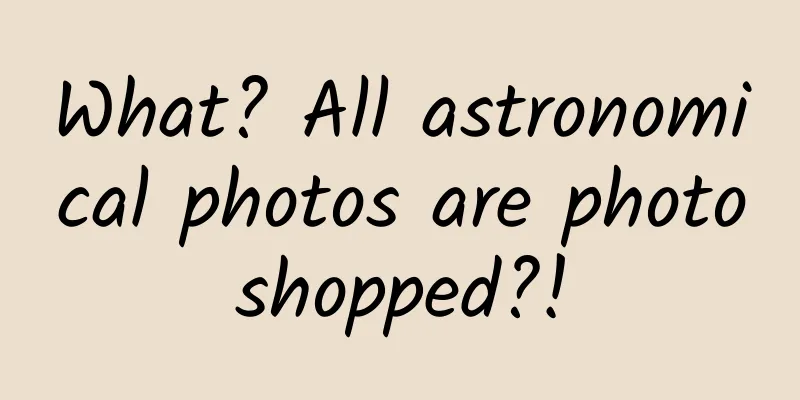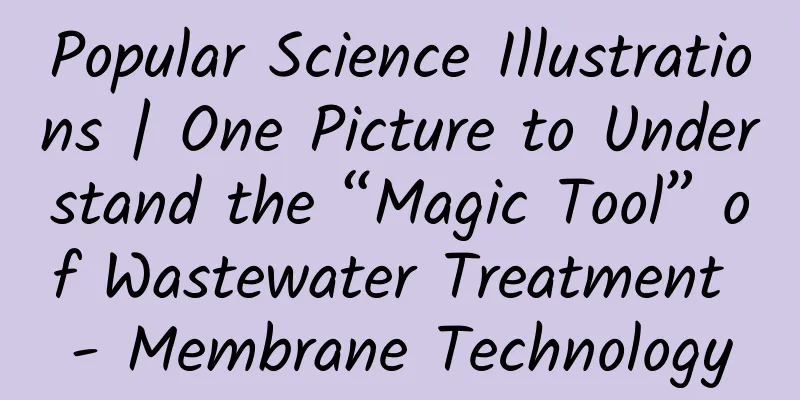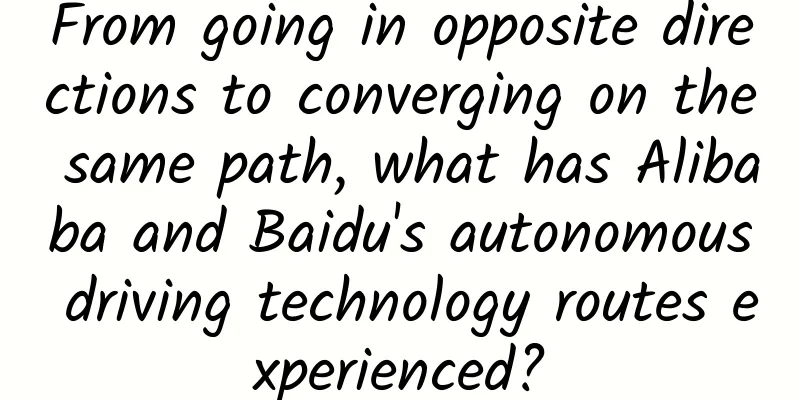What? All astronomical photos are photoshopped?!

|
Many people are interested in astronomy because they are attracted by the magnificent and beautiful astronomical pictures. But do you know that these pictures are all made in post-production? Some of my friends might be shocked. What the hell? Astronomy is also using the same tricks as internet celebrities? I’m done with it. Don't go away. Astronomy "photo-editing" is not just a matter of applying a few filters to a selfie. It is a delicate work that requires both scientific knowledge and artistic attainments, and can also help people understand the universe more intuitively. Next, I will talk to you about the basic skills of "photo-editing" for Chinese and American beautification through several famous pictures. 01 Why is the shape of this picture so weird? Take the "Solar System Family Portrait" taken by the Voyager 1 probe as an example. It was February 1990, and Voyager 1 had flown 6.4 billion kilometers away. It looked back at the solar system and took this famous picture. A family portrait of the solar system, taken by Voyager 1 on February 14, 1990. Image source: NASA Why is the shape of this picture so strange? Of course it is because of the puzzle. The main body of the image is actually a mosaic of 39 separate photos, each of which is marked with a letter, such as J for Jupiter, E for Earth, V for Venus, and so on. Friends who have taken group photos may ask why we didn't just use a wide-angle lens to take a family photo here? This is because the field of view of astronomical observation is usually very, very small. These photos were taken thanks to the probe's intention to take full-body photos of the planets, and it brought a camera with a slightly wider field of view when it set out. From the perspective of astronomical observation, each small photo is already considered "wide-angle"! The six small color photos around were taken by the probe at the same position with a camera with a narrower field of view. When Voyager 1 took this series of photos, it had to adjust the lens direction and set the exposure parameters many times. When synthesizing on the ground, these changes must be faithfully reproduced to stitch the pictures into the correct position. 02 Why is there a missing piece in the upper right corner of these pictures? The following pictures all have a suspicious gap in the upper right corner. What's going on? This is actually the fault of the puzzle. The three pictures are: Coma Berenices M100, IC 2944 (Chicken Walker Nebula), and Hubble Deep Field. Image source: NASA Some photography missions do not require changing the direction of the space telescope, but due to design or technical limitations at the time, they still need to be completed by jigsaw puzzles. For example, the Hubble telescope used the second-generation Wide Field and Planetary Camera (WFPC2) from 1993 to 2009, which had four 800×800 CCD sensors. The final photos we see are all stitched together from four pictures. Among these four CCDs, one is different. Its field of view is smaller than the others, but it has the same number of pixels. This way, it can be used to take pictures of a part of a celestial body for astronomers to study the details. For example, the photo of the Eagle Nebula "Pillars of Creation" should have looked like this: "Pillars of Creation", photographed by the Hubble Telescope on April 1, 1995. Image source: NASA However, when showing it to the public, this angle used to magnify the part has to be reduced in order to be spliced with the other three angles into a smooth photo, like the picture below, where the nebula column on the right is perfectly connected from top to bottom: There are gains and losses. The pictures are connected smoothly, but a gap without content is created. Astronomers have a bottom line and will not create a false background here. Therefore, many photos of the Hubble telescope have this iconic step-shaped dark corner. It was not until 2009 that it was upgraded and used the third-generation wide field camera (WFC3), and this dark corner disappeared. 03 If you take this picture directly, your camera will burn out... In addition to field of view issues, sometimes images are stitched together because the conditions of the subject are too extreme to be seen all at once. For example, the following coronal mass ejection, the plume of material ejected was taken by the LASCO spectrometer of the SOHO solar probe, but LASCO has always only dared to observe the corona behind the sun. Because if it directly "looks" at the sun without any obstruction, that would be the last look - the equipment would burn out on the spot. The sun in the middle of the picture below was taken by the EIT telescope on the probe in the extreme ultraviolet band, which was magnified a little bit compared to the normal size and filled in the middle to enhance the picture effect. These two instruments, one dare not look at the sun, and the other cannot see the outer corona, each taking a part, and putting them together, it is quite beautiful. Coronal mass ejection, January 8, 2002, taken by SOHO. Image source: NASA The sun is smaller in the middle of the normal-size image | Credit: ESA/NASA/SOHO 04 Smoothing astronomical photos is definitely a laborious task... Many beautiful astronomical pictures appear vast, profound, transparent and clear, but in fact, the original pictures are full of dots and lines and are horrible to look at. For example, the picture below is the Orion Nebula I took in the winter of 2015. It is not a good picture because it was taken outdoors casually. I only had a telephoto camera for taking bird photos during the day, and I didn’t have an equatorial mount to eliminate the starlight streaking caused by the rotation of the earth. I had to adjust the camera’s sensitivity very high to shorten the exposure time. But when the camera’s sensitivity is high, the noise increases rapidly, making it difficult to distinguish whether some bright spots are real stars, satellites or space junk, or the camera’s own noise. At this time, you need to overlay images to enhance the signal and suppress noise. Please pay attention to the 4 light spots circled in the picture. The Orion Nebula, December 2015. Photo by Qu Jiong I took a dozen photos, selected a few of good quality, carefully aligned their bright stars in PS, and then, I set the upper layers to "darken" - that is, for each pixel, only the darkest one of all layers is displayed. If there is a real star there, it should be bright in the same position of all layers and will eventually show up. If it is just a satellite, an airplane, a noise caused by high sensitivity, then it will be voted "black" by other layers and disappear in the dark background. The composite photo is as follows. The picture is much cleaner, the real stars are still there, and the bright spots circled in the picture above are gone. I checked and they are in every photo, moving slowly against the background of stars. They may be satellites. Doesn’t the composite photo after superimposing the images look much clearer? In serious astronomical observation, image stacking technology is of course much more complicated than this "five-minute PS tutorial". Take the Hubble Deep Space mentioned above as an example. This photo was taken at the end of 1995 of an extremely dark area in the Ursa Major constellation. In addition to a few Milky Way stars in the foreground, the more than 3,000 celestial bodies that can be seen are almost all distant galaxies, reaching billions of light years away. Such distant and dim starlight forced the Hubble telescope to spend 10 days, orbit the earth 150 times, and expose the same area of the sky for a total of 141 hours. In the end, 342 photos were selected for stacking, the interference of cosmic rays and scattered light from the earth was removed, and the real signal was enhanced to synthesize the Hubble Deep Space image we see today. Hubble Deep Field (and the upper right corner is missing as usual) | Image source: NASA 05 Coloring astronomical images requires both aesthetics and knowledge It is not enough to stitch and stack the pictures. It is also very important to add color. Because the pictures taken by various detectors and space telescopes are actually black and white. If you want to see color pictures, you have to add color later. Why are the original photos black and white? This is not because the technology is backward and the information collected is poor. In fact, it is because the amount of information is too large. Because the electromagnetic spectrum is very broad, and the colors that the human eye and brain can recognize are very limited. Beyond the visible light band, it is "pitch black". What color should the images captured by the instrument in the band outside the visible light be called? Therefore, the detector simply uses light and dark to express what it sees, attaches wavelength information, and packages it up and throws it to humans: "Here, this one is from the microwave band, this one is from the infrared band, this one is from the red light region, this one is from the green light region, this one is from the blue light region, this one is from the ultraviolet band, and this one is from the X-ray band. They are all black and white. You can take your time to look at them. As long as you can distinguish them clearly, it's fine." How do you colorize an astronomical photo? In astronomical photos, the color of each pixel must be based on a reason. It is not like the old photos processed in the past by the photo studio, where you just paint a red face and red lips and that's it. When coloring, you need to consider three questions: Is it realistic? Is it scientific? Is it beautiful? The answers to the three questions correspond to a coloring method, and sometimes they conflict. Let's talk about them in detail. If the photo was originally taken in the visible light band, coloring is very simple. This is the case for most color photos of the planets and surrounding satellites in the solar system. Just pick out the black and white photos corresponding to the three primary colors of blue, green, and red, render them into blue, green, and red, and then superimpose them, and a color photo that looks "just like the real thing" will appear. This kind of coloring in the visible light band is called "natural color." Saturn, taken by Cassini on July 19, 2013. Image source: NASA Beyond visible light, we have to use the idea of physics + philosophy. For example, the four-panel extreme ultraviolet image below was taken at 17.1nm, 19.5nm, 28.4nm, 30.4nm and other wavelengths. Ultraviolet light does not have color, but in order to quickly identify these wavelengths, we might as well color them in the order of the wavelengths of visible light, from blue to red. This color order is consistent with electromagnetic physics, so it is very easy to understand and remember, and it is quite beautiful! Extreme ultraviolet image of the sun, taken by SOHO on December 31, 2021. Image source: NASA Is it real? Is it scientific? Is it beautiful? When the latter two answers win, we can challenge the first question: Even if we think it is not real, it is because our vision is too narrow and our bandwidth is not enough... In other words, humans have sent so many instruments into space at all costs for scientific research, not for sightseeing. The narrow colors of visible light are meaningless in the entire electromagnetic spectrum. As long as we can express scientific information, we can ignore the visible light color of the celestial body and give it a completely different color. At this time, we give the photo a "representative color". Take the "Pillars of Creation" as an example. Its original image was a black and white photo in three bands. The left picture shows the 502nm blue-green glow of oxygen, the middle picture shows the 657nm red glow of hydrogen and nitrogen, and the right picture shows the 673nm deep red glow of sulfur, which were obtained using filters of corresponding wavelengths. The reason for detecting these wavelengths is that these elements are important components of celestial bodies. So the question is, what will be the result if one blue-green and two reds are superimposed on each other? The result is this. It may be closer to the true appearance of the celestial body, but such a real blood-red color has no information content at the scientific level. What astronomers pursue is clarity at a glance. As mentioned earlier, in order to convey scientific information, we can abandon the "original color" of celestial bodies. In this way, we define oxygen with the shortest wavelength as blue, hydrogen + nitrogen as green, and sulfur with the longest wavelength as red (sulfur: I am originally red...), and then make another picture. Suddenly, you feel so moved that you want to cry, right? ! (As mentioned earlier, Hubble upgraded its camera in 2009, so the missing piece in the upper right corner was filled in) "Pillars of Creation", photographed by the Hubble telescope on October 29, 2014. Image source: NASA Not only are the colors of the pictures more colorful, but it also facilitates the transmission of scientific information. After we know the correspondence between the three primary colors of blue, green, and red and the various elements, we can directly interpret the distribution of elements in various parts of the "Pillars of Creation", which is much easier than the "real" "Pillar of Flesh and Blood". There are also some coloring methods that are neither realistic nor scientific. For example, the nebula behind NGC1850 in the picture below originally emits red light from hydrogen alpha rays. If it is colored red, it does not hinder scientific expression, but the photo editor is very willful and is happy to use blue to express it. This kind of blending has personal aesthetic taste and is called "enhanced color". NGC1850, photographed by the Hubble Telescope on July 10, 2001. Image source: NASA Let’s review the three questions of coloring: Is it real? If it is, we call it "natural color". Is it scientific? If it is scientific, we call it "representative color". Is it beautiful? If it is, we call it "enhanced color". To sum up, in order to obtain an astronomical photo that combines beauty and science, art and reality, it often requires the joint efforts of astronomers and artists, and goes through several major steps such as puzzle making, overlaying, and coloring. I would also like to add that some beautiful pictures, such as the third-person perspective of a probe approaching a planet, or the scene of faster-than-light travel with stars flying around, are concept drawings created by artists, not astronomical photos. After reading this, I believe you have a better idea of how to make beautiful astronomical pictures! Have you not lost your interest in the vast universe at all, but are you more willing to wander in it? Author | Qu Jiong, a popular science writer, has published works in the National Museum, the National Space Administration, etc. Review | Liu Xi, researcher at Beijing Planetarium, science film director and writer Editor | Ding Zong This article is produced by the "Science Rumor Refutation Platform" (ID: Science_Facts). Please indicate the source when reprinting. The pictures in this article are from the copyright gallery and are not authorized for reproduction. |
<<: Dizziness, headache, panic, insomnia, and always want to quarrel with others?
Recommend
Analyzing the reasons for the popularity of "Story of Yanxi Palace" from four perspectives of Internet operations
This article mainly analyzes the reasons for the ...
Samsung S8 is very easy to crack the screen. It will crack after falling from a height of 1.8 meters.
Last Friday, Samsung Electronics' most import...
Why do children breathe with their mouths open? Will they really get uglier the longer they sleep?
Not long ago, Laoba Review received a letter from...
Yingke team Fanxiang Life guarantees a monthly income of 10,000 yuan passively earning full tutorial
As we all know, platforms such as Fenxiang Life a...
Chinese space station space puzzle, comparison of the three cabins of Tianhe, Wentian and Mengtian
Your browser does not support the video tag The l...
Big data prediction | Is Xiaoming Bicycle’s strategy of charging 10 cents for a bicycle feasible?
Gartner, a research organization, gave the follow...
Jiuquan WeChat ordering software mini program, how much does the WeChat mini program for ordering food cost?
Everyone is familiar with WeChat mini-programs . ...
Zeng Chengkui: I have been cultivating the sea all my life. He said, I am the son of the sea.
Zeng Chengkui, a marine biologist, academician of...
Summary of iOS classic interview questions - memory management
[[163414]] I made a summary based on my own situa...
Fire caused by smoked bacon killed three generations of grandparents and grandchildren in their home! Four escape skills must be mastered!
Around 0:22 am on December 4th, A residential bui...
Why is Huawei confused? Ren Zhengfei said there is no one to lead the way
At the National Science and Technology Innovation...
Practical experience in information flow: detailed analysis of the three core influencing factors of an account!
"I know there is a problem with my account, ...
Media spending rankings for the first half of 2016 [with a list of major advertisers]
The latest monitoring data from CCTV Market Resea...









